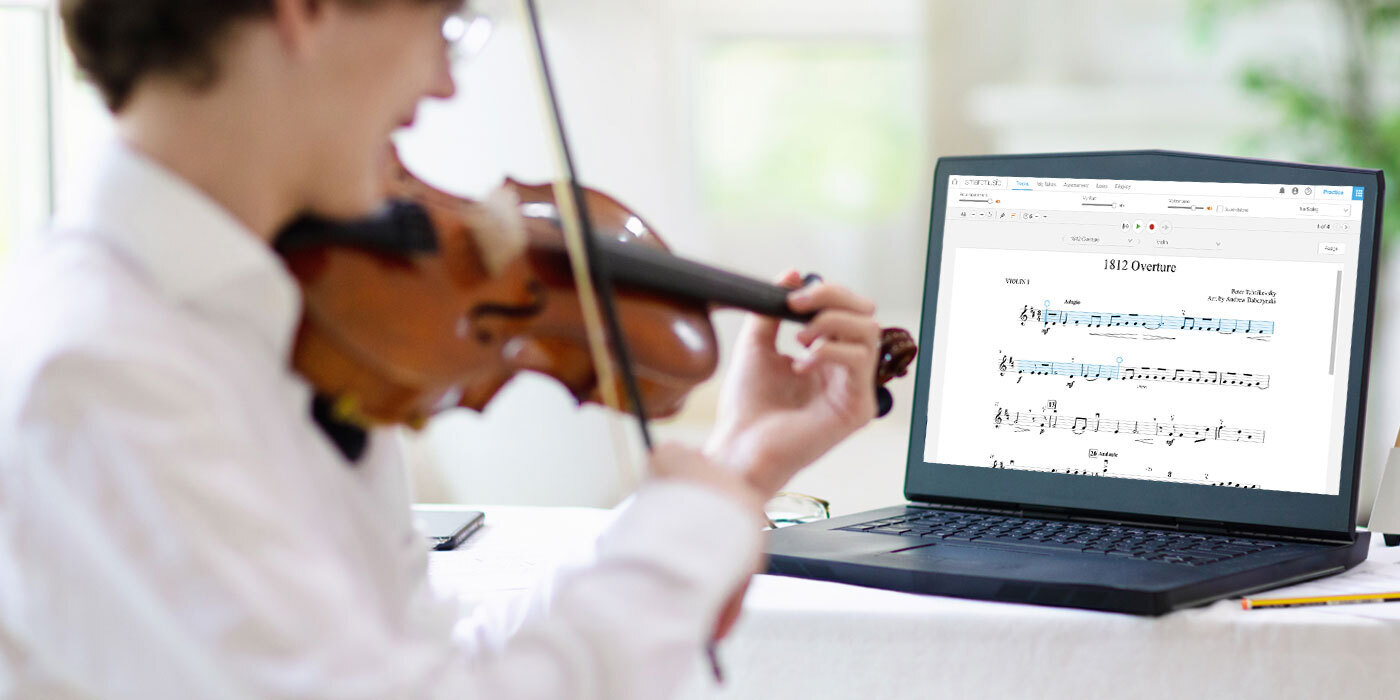
Instead of focusing on what students practice, teach them how to practice. You’ll build valuable ear training skills, make them more productive, motivate and engage kids, and see the results when your ensemble comes together.
Music teachers have to get students to hit 98% accuracy or better. There’s a great example of Jack Stamp showing just what happens when music students don’t achieve mastery. The results are pretty telling – when students don’t push past an “A” (or 90%), the music stop sounding like music. But we don’t necessarily model for students exactly what they should do in order to get “better than an A”. Mastery in performance happens because of individual practice.
There are many techniques that students can use to make their practice time more efficient and effective – slowing the piece down, managing and scheduling practice time, setting clear expectations, and more. In this article, we’ll focus on using SmartMusic’s metronome, looping functions, and Practice Analysis tool to help students achieve mastery.
Metronome
Every music student has been told “start slow, play it correctly, then speed it up little by little to performance tempo.” And every music student has ignored that advice and tried to sight read something far too difficult. SmartMusic’s metronome makes this task easy. Playing along with “My Part” and increasing the speed 4 beats per minute on every play through is as simple as clicking the button in the SmartMusic interface.
Remind students that perfection on pitch and rhythm is the goal – we’ll work on musicality later. If perfection means playing a second, third, or tenth time at the same tempo before moving on, that’s ok!
Loops
SmartMusic’s looping function makes isolating difficult passages easy. Students can set a loop so that it starts and ends on any beat or note, and then adjust the metronome as they practice so that the loop speeds up. This opens up a number of options for practice:
- Students can isolate a specific section, and slowly increase the tempo
- At a slow tempo for mastery, students can gradually increase the length of the loop, adding a measure on each repetition
- Students can practice alternate articulations or fingerings on each play-through
- Using goal tones when practicing jazz improvisation
Looping gives students different ways to manipulate and adjust their practice so that they’re able to isolate and focus on a specific goal for the day’s practice session.
Practice Analysis
Student practice time is automatically logged and tracked in SmartMusic, so both the student and their teacher can see how many minutes they spent practicing assignments in a given time period. This can provide the basis for some friendly competition, but also gives students motivation and can serve as a check in. Parents and administrators are often surprised to see just how much (or how little) time students spend working on their musical skills.
Over to You
Modeling each of these approaches helps students learn how to practice. You can do this with a screen-share on Zoom or Google Classroom, and students will also learn (remotely) how to manipulate the SmartMusic interface and gain familiarity with the tool.